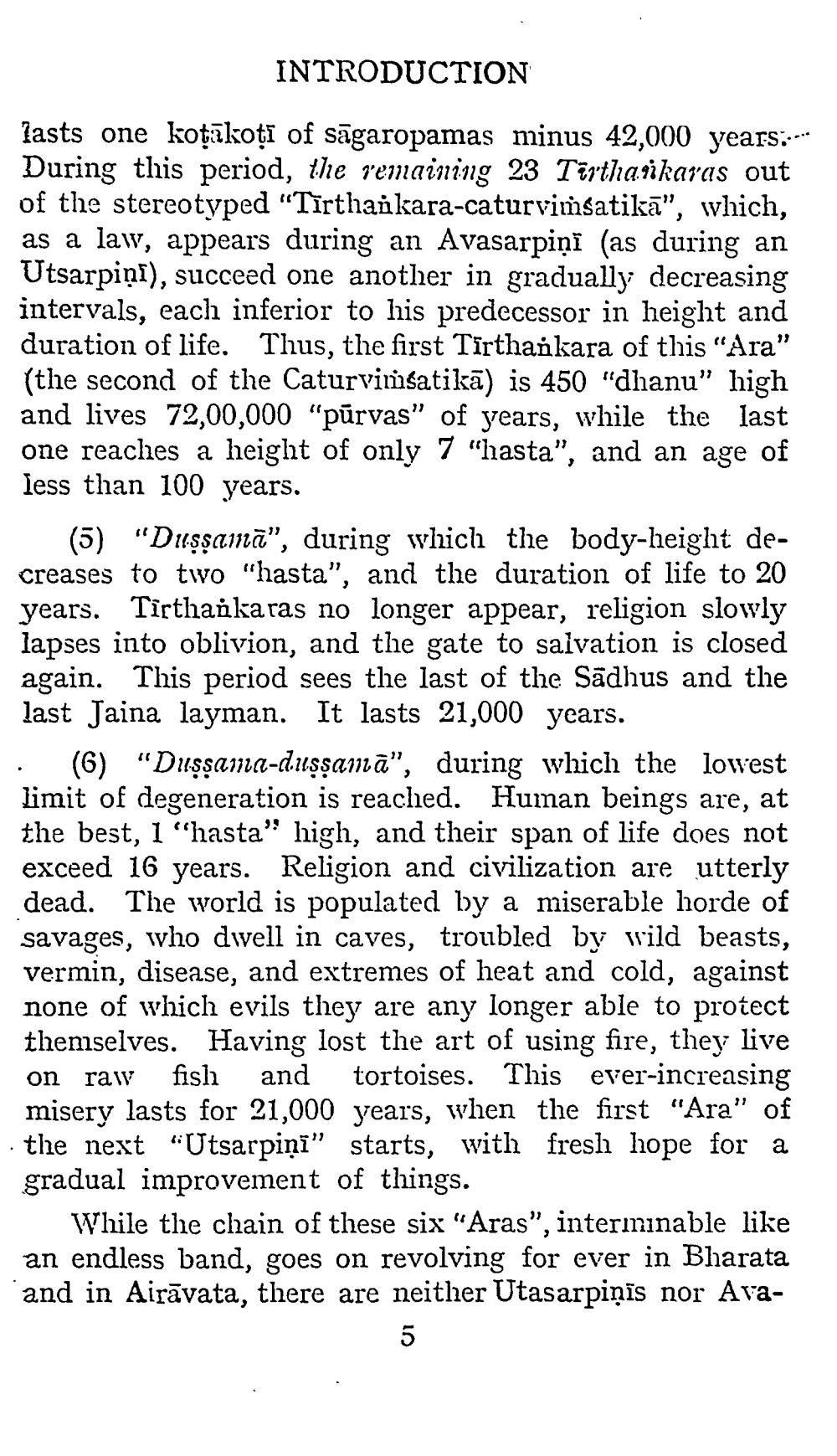________________
.
INTRODUCTION
lasts one koṭākoți of sāgaropamas minus 42,000 years:-* During this period, the remaining 23 Tirthankaras out of the stereotyped "Tirthankara-caturvimsatikā", which, as a law, appears during an Avasarpiņi (as during an Utsarpiņi), succeed one another in gradually decreasing intervals, each inferior to his predecessor in height and duration of life. Thus, the first Tirthankara of this "Ara" (the second of the Caturvimsatikā) is 450 "dhanu" high and lives 72,00,000 "purvas" of years, while the last one reaches a height of only 7 "hasta", and an age of less than 100 years.
(5) "Duṣṣama", during which the body-height decreases to two "hasta", and the duration of life to 20 years. Tirthankaras no longer appear, religion slowly lapses into oblivion, and the gate to salvation is closed again. This period sees the last of the Sadhus and the last Jaina layman. It lasts 21,000 years.
(6) "Dussama-duṣṣamā”, during which the lowest limit of degeneration is reached. Human beings are, at the best, 1 "hasta" high, and their span of life does not exceed 16 years. Religion and civilization are utterly dead. The world is populated by a miserable horde of savages, who dwell in caves, troubled by wild beasts, vermin, disease, and extremes of heat and cold, against none of which evils they are any longer able to protect themselves. Having lost the art of using fire, they live on raw fish and tortoises. This ever-increasing misery lasts for 21,000 years, when the first "Ara" of the next "Utsarpiņi" starts, with fresh hope for a gradual improvement of things.
While the chain of these six "Aras", interminable like an endless band, goes on revolving for ever in Bharata and in Airāvata, there are neither Utasarpiņis nor Ava
5




